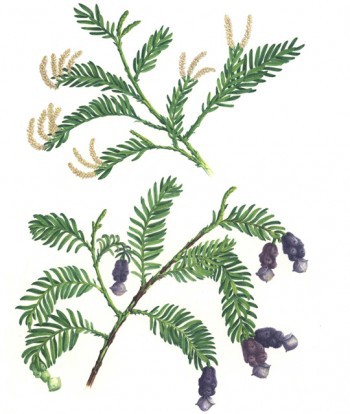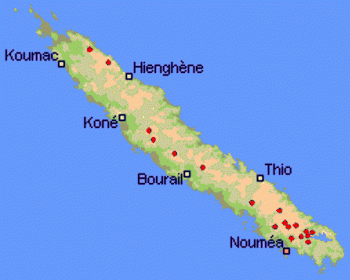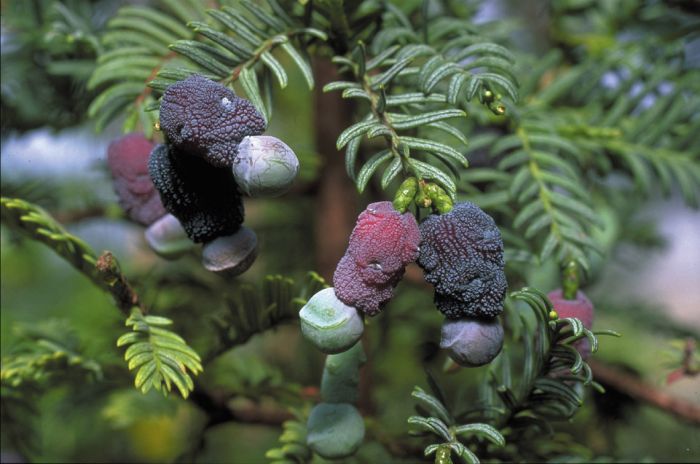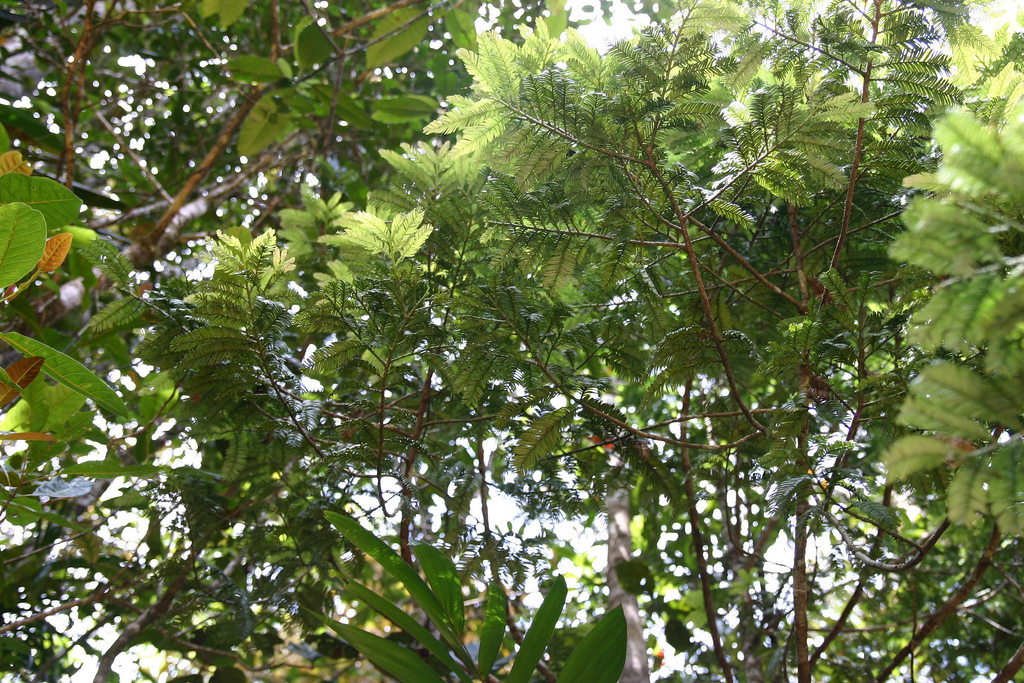Acmopyle pancheri, as described in 1926 by (Brongniart et Grisebach) Robert Knud Friedrich Pilger (1876-1953), in Das Pflanzenreich, 4th edition, is commonly known as New Caledonian acmopyle, or Pancher's acmopyle. The species name honors Jean Armand Pancher (1814 - 1877) who collected the type specimen for the French Colonial Adminstration between 1857 and 1869. It is closely related to Dacrydium and Podocarpus.

Description. A. pancheri is an evergreen coniferous species of tree in the Podocarpaceae family which will grow to mature heights of 15 to 80 feet (5 - 25 m) tall with upright branches.
Distribution. This species is native only to New Caledonia - where it is common in the coniferous forests at the top of Mont Mou.




